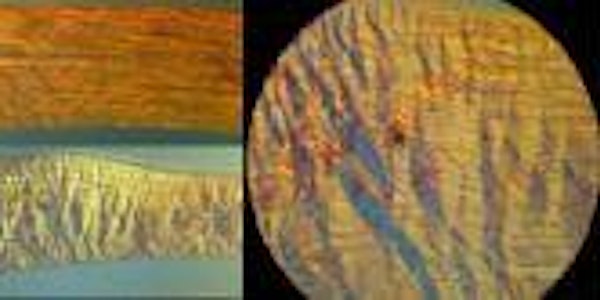
SIG Event on Fluid Mechanics of the Eye
Date and time
Location
University of Glasgow, Maths & Stats Building
University Place Glasgow G12 8SQ United KingdomDescription
This event is funded by EPSRC UK Fluids Network with additional support from SofTMech
This event will bring together a group of modellers to work on problems related to the fluid mechanics of the eye. It follows as part of a series of meetings funded by the UK Fluids Network (past meetings at Imperial, Oxford, Manchester). The event will be an informal study group considering two problems – one related to the cornea and the front of the eye (Problem 1) and one related to the retina and the back of the eye (Problem 2). More details of the problems can be found below.
Approximate timetable:
Tuesday
11:30-12:00 Problem 1 presentation
12:00-12:30 Problem 2 presentation
12:30-1:30 Lunch
1:30-3:00 Work in groups
3:00-3:30 Coffee
3:30-5:00 Work in groups
5:00 Brief summary of work so far
6:30 Dinner locally
Wednesday
9:00-10:45 Work in groups
10.45-11.15 Coffee
11:15-1:00 Work in groups
1:00-2:00 Lunch
2:00-2:25 Presentation on problem 1
2:25-2:50 Presentation on problem 2
2:50-3:00 Final discussion and follow up planning
Problem 1: Lamellar folding in Keratoconus
Presenter: Gary Misson, Aston University
Keratoconus is a disease which results in significant changes in shape of the cornea, which can result in distorted vision. Mechanically, deformation occurs due to thinning of the cornea itself which can then cause it to bulge into a cone like configuration. However, the cornea is composed of several layers of soft tissue which are reinforced by families of collagen fibres. This problem aims to consider the changes in corneal shape that results from changes to the thickness, composition or orientation of fibres within one or more of these tissue layers.
In particular, we wish to use mathematical modelling to understand and explain the zig-zag lamellar folding structure of the corneal layers which can be seen is keratoconus (see image).
Problem 2: Macular holes
Presenter: Louisa Wickham, Moorfields Eye Hospital
Details to follow